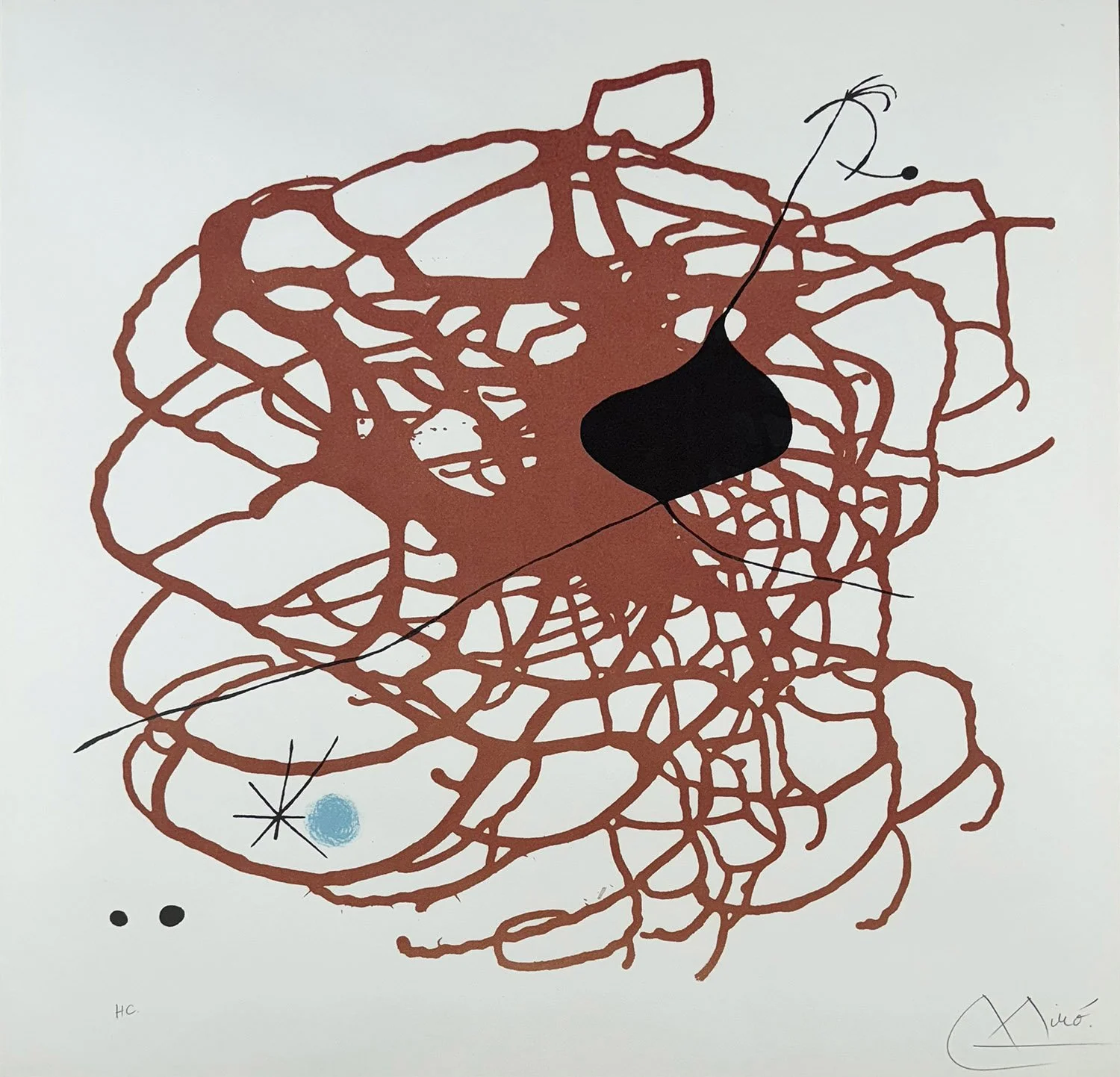Joan Miro - prints and biography
Joan Miro
Biography
Joan Miró i Ferrà (1893–1983) was one of the most influential artists of the 20th century, celebrated for his pioneering role in Surrealism and his ability to merge abstraction with a distinct personal symbolism. Born in Barcelona, Miró studied at the city’s School of Fine Arts and developed early interests in both painting and drawing. His Catalan roots remained an enduring source of inspiration, infusing his work with Mediterranean light, vivid color, and a sense of poetic whimsy.
Although Miró is best known for his paintings and sculptures, printmaking played a vital role in his career. Over the course of his lifetime, he created more than 1,000 lithographs, etchings, and woodcuts, exploring the expressive possibilities of graphic art with the same inventiveness he brought to canvas. His prints, often filled with floating biomorphic shapes, playful constellations, and calligraphic marks, became a cornerstone of his practice and allowed him to reach wider audiences. In recognition of his achievements, Miró received the Grand Prize for Graphic Work at the Venice Biennale in 1954.
Miró’s visual language was characterized by spontaneity, vibrant primary colors, and abstract forms that evoke both the cosmos and the subconscious. These elements, combined with influences from Catalan folk art and prehistoric imagery, created a body of work that is at once deeply personal and universally resonant. He often rejected conventional realism, instead striving for what he described as “assassinating painting”—a desire to break away from tradition and reinvent visual expression.
Throughout his career, Miró exhibited internationally, leaving an indelible mark on modern art. His works are represented in major institutions worldwide, including the Museum of Modern Art in New York, the Tate Modern in London, and the Fundació Joan Miró in Barcelona, which remains dedicated to his legacy.
Today, Miró is remembered not only as a central figure of Surrealism but also as an innovator who redefined the boundaries of painting, sculpture, and printmaking, leaving behind a rich legacy of visual poetry.

